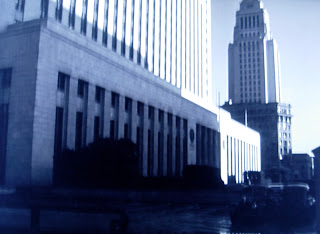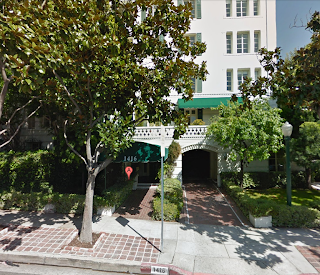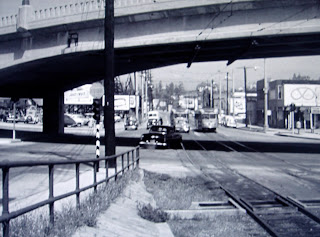Broderick Crawford (1911-1986)
 |
| The essence of fifties masculinity. |
�My trademarks are a hoarse, grating voice and the face of a retired pugilist � small, narrowed eyes set in puffy features which look as though they might, years ago, have lost on points.�
.jpeg) |
| Dispensing justice in The Mob (1951). |
�You get lost for years inside this business. You watch people making mistakes about you and there�s nothing you can do about it. They told me out here I wasn�t the type to play Lennie in the picture [Of Mice and Men, 1939], so I became a B-picture thug at Paramount, for years, working with Lloyd Nolan and J. Carrol Naish, who were also lost, who were as talented as actors get, and who cared?� (1956 article in Pageant)
 |
| As Chief Dan Mathews on TV�s Highway Patrol (1955-1959). |
�...back in the days when I was really learning my trade, I could ride on the subway and study people for a day at a time, and remember the little things, movements and moods that made me understand some man I�d never see again. All that went into my memory, and I could call it up when I needed it. That may be a kind of technique. And the rough time you have when a character is soaking into you, and making you inarticulate, heavy, dumb, until he grows big and firm enough inside you to take over.� (1956 article in Pageant)
.jpg) |
| Eyeing his Academy Award for All the King�s Men (1949). |
�I�m a happy fella. I work, I play. I do what I want to, practically. I like a few people very much. I like to roam around with them. Very much. A few bucks in my pocket, the phone rings, off we go. The bullfights in Tijuana, Vegas, the beach. I like all kinds of exercise. There are games a guy can play for years and years.� (1956 article in Pageant)
.jpeg) |
| Under Neville Brand�s gun in The Mob (1951). |
[On Hollywood parties] �I don�t go to them anymore. When people tell you they saw your last picture, well, the way they say it sounds like they hope it was.� (1957 article in TV Guide)
 |
| Having a smoke in between saying �10-4.� |
[On Highway Patrol] �They told me what they had in mind and in five minutes I knew it was for me. Frankly, I was glad to go on the side of the good boys for a change. I had had enough of playing gunmen, goons, morons and meatballs.� (1959 article in Men Only)
.jpeg) |
| Asserting his authority over William Talman and Ralph Meeker in Big House U.S.A. (1955). |
�F*** with me and you�re f***ing with dynamite. My mother always said be ready, so I start the night before. My father, who broke my nose the first time because I failed to call him �sir,� told me, �Son, in a bar or a theater, always look for the exit � and hold it down to beer when working. But when it�s cocktail time, stand back!� � (1971 article in TV Guide)
 |
| Looking deceptively benign. |
�I got it figured. Now write this down, it�s a prepared statement like Nixon. You live your life, I�ll live mine. I�m too young for Medicare and too old for broads to care. I collect antiques. Why? Because they�re beautiful. The prop men can see me coming. They know I�ll steal anything with a mark on it.� (1971 article in TV Guide)
My favorite Broderick Crawford films: Black Angel (1946), All the King's Men (1949), Convicted (1950), The Mob (1950), Born Yesterday (1950), Scandal Sheet (1952), Down Three Dark Streets (1954), Big House U.S.A. (1955), New York Confidential (1955), Il Bidone (1955), The Fastest Gun Alive (1956), Convicts 4 (1962)







































